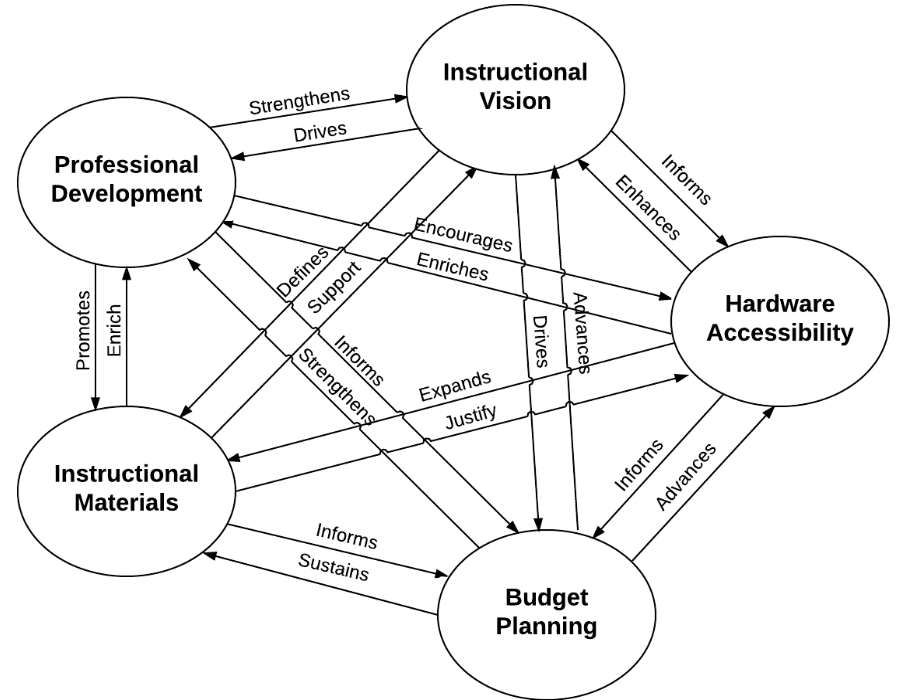This post is sixth and final in my Focus 2020 series for the new year. Here are the links if you missed the earlier posts:
- – Executive Function Fuels Goal Achievement
- – Engagement First; Achievement Will Follow
- – Encourage Students to “Make It” and “Solve It”
- – Prioritize Student Choice
- – Teacher as Curator
I don’t know if you saw it already, but I loved the 2020 kickoff blog post by the #NewGuys (Todd Schmidt and Matthew Arend): “Building Relationships: A Journey, Not a Destination.” You’ll find many good tips and perspectives in there. While they’re talking about relationships with people, relationships are key for bringing together all of your initiatives as well. Building relationships is the work of a savvy leader.
Okay, so you already have five elements of focus for 2020. The sixth is “systems!” It’s important to ensure that all of your goals and initiatives work together like a well-oiled machine; after all, they are the components of your system. Whether it’s a leadership system, schoolwide system, or classroom system . . . whether it consists of structures, people, or ideas . . . all components work together to make it happen! It’s about relationships.
As an example of a problematic system, a teacher may write a powerful lesson plan to teach the skeletal system, then teach an amazing lesson on planets, and administer a well-constructed assessment on ecosystems. Anyone observing this would criticize the teacher. Why? Because, even though each individual component was outstanding, those components didn’t align with one another! There was no instructional system at work. It’s about relationships.
A system consists of nodes and lines.

While the nodes represent the components of any system, the more important aspect is the collection of lines between the nodes. The lines represent the interrelationships that exist among all of the nodes. THESE determine the health of the system. If you think back to my earlier example, even though the “nodes” of the lesson plan, lesson, and assessment were all outstanding, the fact that the planning did not drive the lesson and the assessment did not reflect the lesson was problematic.
So when you think of the five focus ideas, consider how they work together to create a culture of achievement. How will executive function support engagement and vice versa? How will teacher as curator support student choice and vice versa?

It’s important that as you focus on these goals, whether in a school or a classroom, they work together and don’t appear to be five different initiatives. Use the interrelationships to strengthen your system of innovation for 2020!
More Resources:
